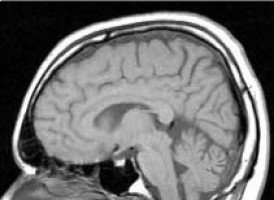
Scientists may have discovered why some brain cancer patients develop resistance to standard treatments including radiation and the chemotherapy agent temozolomide.
Simply put, it’s all in their DNA, and it could open up new avenues for treating certain kinds of brain cancer.
In the case of glioblastoma, the most common and aggressive type of glioma or brain cancer, DNA can also allow the disease to progress more quickly when it is “enhanced,” allowing damaged or mutated cancer cells to repair themselves.
“A major obstacle to effective treatment is acquired resistance to treatment,” said Professor Wei Zhang of the MD Anderson Cancer Centre, Texas, USA.
“Enhanced DNA repair can allow these cancer cells to survive, contributing to resistance and tumour recurrence. We have identified Aktr3 as having the ability to robustly stimulate glioma progression."
Akts are proteins known as kinases that regulate cell signalling. They’re involved in many bodily processes such as cell growth, cell death and tumour growth.
Akts are thought to contribute to the development and progression of many cancers including prostate, breast, liver, colorectal and others. One form of this protein, Akt3, appears to be especially prevalent in the brain.
Zhang’s findings, which are published in the Proceedings of the National Academy of Sciences, describe his team’s study results showing how Akt3 activates key DNA repair pathways.
In Zhang’s research, he reveals that Akt3 is tied to DNA’s “repair panel,” somehow boosting activation of DNA repair proteins, leading to increased DNA repair, and subsequently to cancer treatment resistance.
“This activation led to enhanced survival of brain tumour cells following radiation or treatment with temozolomide,” said Zhang. “Our work has potentially broad application to multiple cancer types in which Akt3 is expressed.
"Blocking this pathway may help prevent or alleviate therapeutic resistance resulting from enhanced DNA repair.”
Source: MD Anderson Cancer Centre
The World Cancer Declaration recognises that to make major reductions in premature deaths, innovative education and training opportunities for healthcare workers in all disciplines of cancer control need to improve significantly.
ecancer plays a critical part in improving access to education for medical professionals.
Every day we help doctors, nurses, patients and their advocates to further their knowledge and improve the quality of care. Please make a donation to support our ongoing work.
Thank you for your support.